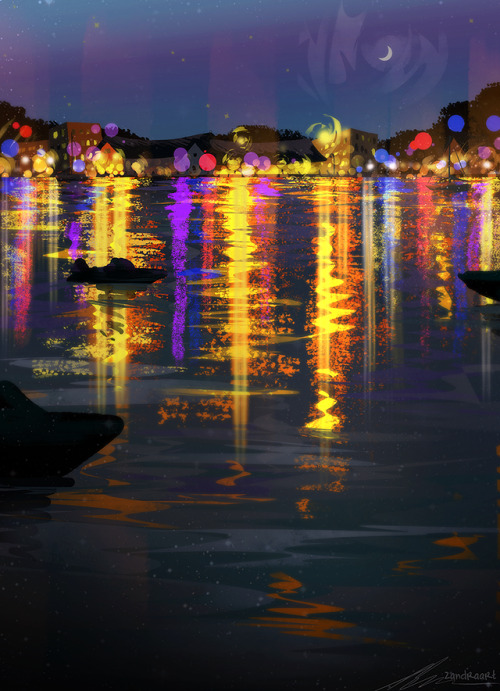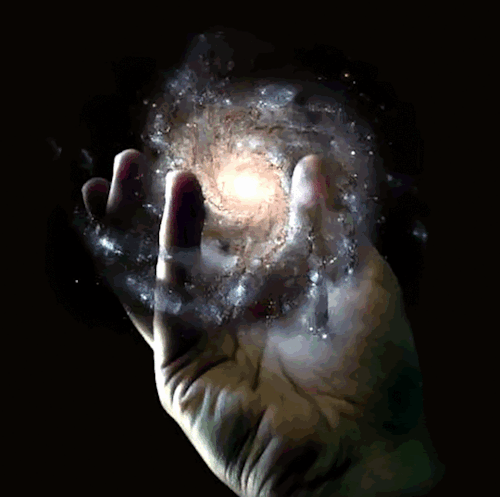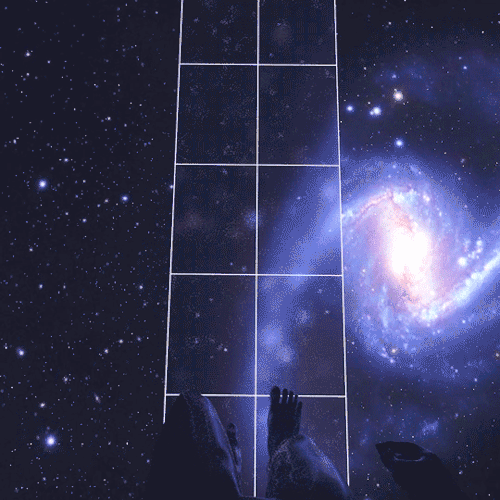I Didnt Know This Until Rn But Apparently Theres Things Called Sundogs & Moondogs That Are Basically
i didnt know this until rn but apparently theres things called sundogs & moondogs that are basically the halo that sometimes appears around the sun & moon
this is a sundog

and this is a moondog

this is so cool & such cute names omg?????? i love space
More Posts from Ship-happenss and Others
The types as I know them
ISFJ
-wants to cuddle always
-loves fuzzy socks
-gives you gifts when you’re sad
-wonderful baker
-SO BOOK SMART
-takes ten minutes to get a joke
-super athletic
Istp
-tough as nails
-doesn’t really care about humans
-would take a bullet for a dog
-really loves food
-super smart but won’t admit it
-good at literally everything, but gets bored and drops whatever it was.
-SUCH A GOOD WRITER WOW
-has such an edgy dark vibe
Entp
-Vegan (not for animals just to be different & “healthy”)
-gainsss fanatic
-obsessed with plants
-probably a psychopath
-hyped when around friends
-tries extremely hard to get their crap together, but their organization fades away.
-we share the same humor
INTJ
-so, so many puns
-sends the most bizarre IG videos to the group chat
-everybody LOVES her, but she hates 99% of people.
-loves vanilla shakes
-reads so freaking much
-has at least 5 guys in love with her and her reaction is “meh”
-blushes a lot
ENTJ
-such a douche, honestly
-SO GOOD AT LITERALLY ANYTHING
-wants to own a coffee shop one day
-finds everyone inferior
-never tries because there is no competition
-got a 32 on the ACT and isn’t going to college just cuz
-actually really romantic
-has your back like nobody else
INTP
-in his head ALL the time
-actually cares a lot
-snarky comments constantly
-really logical
-can figure anything out
-he is impossible to read
-told me he hasn’t cried for 4 years
-can’t figure out what to do in life
-LOYAL AF
ESFJ
-Done with bs before it starts
-such a goober
-really easy going but a lot of fun
-mediocre intellectually, but could get amazing grades if he applied himself
-has been saying he’s gonna break up with his gf for months and still hasn’t
-plays baseball
-JOCK®
ENFP
-makes weird noises constantly
-so sweet to everyone
-every girl I know is in love with him
-very protective over family/friends
-has a good heart
ENFJ
-just wants the world to be a better place
-in color guard
-so smol
-blames herself for anything that goes wrong
-the SWEETEST
-posts wayyyyy too many heartfelt IG pictures
-loves to paint
-cares
INFJ
-SWEET
-feels awkward
-when she gets mad it’s really funny because she doesn’t look mad at all
-loves nature
-SUPER SMART
-so humble

kaleidoscope

Zzzzzzz
Always wear your mind like a crown, it’s the greatest weapon.
Honey Jumalon (via mielintoxicante)
Jupiter's Great Red Spot Getting Taller as it Shrinks
Discover how a team of our scientists has uncovered evidence that Jupiter’s Great Red Spot is growing taller as it gets smaller.
Though once big enough to swallow three Earths with room to spare, Jupiter’s Great Red Spot has been shrinking for a century and a half. Nobody is sure how long the storm will continue to contract or whether it will disappear altogether.

A new study suggests that it hasn’t all been downhill, though. The storm seems to have increased in area at least once along the way, and it’s growing taller as it gets smaller.

Observations of Jupiter date back centuries, but the first confirmed sighting of the Great Red Spot was in 1831. But until then, researchers aren’t certain whether earlier observers who saw a red spot on Jupiter were looking at the same storm.

Amy Simon, an expert in planetary atmospheres at our Goddard Space Flight Center in Greenbelt, Maryland, and her team traced the evolution of the Great Red Spot, analyzing its size, shape, color and drift rate. They also looked at the storm’s internal wind speeds, when that information was available from spacecraft.

This new study confirms that the storm has been decreasing in diameter overall since 1878 and is now big enough to accommodate just over one Earth at this point. Then again, the historical record indicates the area of the spot grew temporarily in the 1920s. Scientists aren’t sure why it grew for a bit.

Because the storm has been contracting, the researchers expected to find the already-powerful internal winds becoming even stronger, like an ice skater who spins faster as she pulls in her arms.

But that’s not what is happening. Instead of spinning faster, the storm appears to be forced to stretch up. It’s almost like clay being shaped on a potter’s wheel. As the wheel spins, an artist can transform a short, round lump into a tall, thin vase by pushing inward with his hands. The smaller he makes the base, the taller the vessel will grow.

The Great Red Spot’s color has been deepening, too, becoming is a more intense orange color since 2014. Researchers aren’t sure why that’s happening, but it’s possible that the chemicals coloring the storm are being carried higher into the atmosphere as the spot stretches up. At higher altitudes, the chemicals would be subjected to more UV radiation and would take on a deeper color.

In some ways, the mystery of the Great Red Spot only seems to deepen as the iconic storm gets smaller. Researchers don’t know whether the spot will shrink a bit more and then stabilize, or break apart completely.
For more information, go here/watch this:
For the full story, click HERE.
Make sure to follow us on Tumblr for your regular dose of space: http://nasa.tumblr.com.
Quando gli intuitivi incontrano l’Universo
INFP

ENFP

INFJ

ENFJ

INTP

ENTP

INTJ

ENTJ





Physical Properties of Gallium: The Wonder Metal
Gallium does not crystallize in any of the simple crystal structures. The stable phase under normal conditions isorthorhombic with 8 atoms in the conventional unit cell. Within a unit cell, each atom has only one nearest neighbor (at a distance of 244 pm). The remaining six unit cell neighbors are spaced 27, 30 and 39 pm farther away, and they are grouped in pairs with the same distance. Many stable and metastable phases are found as function of temperature and pressure.
The bonding between the two nearest neighbors is covalent, hence Ga2 dimers are seen as the fundamental building blocks of the crystal. This explains the drop of the melting point compared to its neighbor elements aluminium and indium.
The physical properties of gallium are highly anisotropic, i.e. have different values along the three major crystallographical axes a, b, and c (see table); for this reason, there is a significant difference between the linear (α) and volume thermal expansion coefficients. The properties of gallium are also strongly temperature-dependent, especially near the melting point. For example, the thermal expansion coefficient increases by several hundred percent upon melting.
More science and gifs on my blog: rudescience Gif made from: This video References: (x), (x). You can donate to support more science content on tumblr: here
“My heart is not captured easily. I am disinterested in small talk, disillusioned with love, and too focused on my dreams and aspirations to lend anybody my attention for long. But if we make that connection, if you find your way into my heart, God, I will fall for you like gravity has let go of the Earth.”
—
Beau Taplin

Types of people: Make-up products
Foundation: Everyone’s go-to friend. Wants everything to be perfect. Cares a lot. Always there for others. Fades into the background but is never forgotten.
Blush: Flower crowns. Homemade jam. Walking barefoot in the sand. Soft laughs. Gentle touches. Knowing what’s wrong with one look. Very sensitive.
Contour: Bold. Knows what they want to do. Doesn’t care about anyone’s opinions. Very confident. Doesn’t make friends easily but very popular.
Lipliner: Keeps their friends in check. Always the designated driver. Takes responsibility. Very controlled. Bit of a perfectionist. Rarely talks. Looks mean but is actually very nice.
Lipstick: Constantly striving to be better. Talks confidently. Wants to conquer the world. Grew up too fast. Powerful strides. Self-assured movements. Hard working.
Lipgloss: Falls in love easily. Thinks the best of everyone. Wants to stay young forever. Talks too much. Laughs loudly. Warm smiles and loving touches. Cares a lot.
Eyeshadow: Very fashionable. Keeps up with trends. Likes to wear a lot of different colours. Stands out in a crowd. Makes friends easily. Helps everyone they can.
Mascara: Rolls their eyes constantly. Very sarcastic. Wears all black. Creates a difference in a subtle way. Doesn’t show it but actually cares a lot. Tired all the time.
8 Common Questions About Our James Webb Space Telescope
You might have heard the basics about our James Webb Space Telescope, or Webb, and still have lots more questions! Here are more advanced questions we are frequently asked. (If you want to know the basics, read this Tumblr first!)
Webb is our upcoming infrared space observatory, which will launch in 2021. It will spy the first luminous objects that formed in the universe and shed light on how galaxies evolve, how stars and planetary systems are born and how life could form on other planets.
1. Why is the mirror segmented?
The James Webb Space Telescope has a 6.5-meter (21.3-foot) diameter mirror, made from 18 individual segments. Webb needs to have an unfolding mirror because the mirror is so large that it otherwise cannot fit in the launch shroud of currently available rockets.

The mirror has to be large in order to see the faint light from the first star-forming regions and to see very small details at infrared wavelengths.

Designing, building and operating a mirror that unfolds is one of the major technological developments of Webb. Unfolding mirrors will be necessary for future missions requiring even larger mirrors, and will find application in other scientific, civil and military space missions.
2. Why are the mirrors hexagonal?
In short, the hexagonal shape allows a segmented mirror to be constructed with very small gaps, so the segments combine to form a roughly circular shape and need only three variations in size. If we had circular segments, there would be gaps between them.

Finally, we want a roughly circular overall mirror shape because that focuses the light into the most symmetric and compact region on the detectors.

An oval mirror, for example, would give images that are elongated in one direction. A square mirror would send a lot of the light out of the central region.
3. Is there a danger from micrometeoroids?
A micrometeoroid is a particle smaller than a grain of sand. Most never reach Earth’s surface because they are vaporized by the intense heat generated by the friction of passing through the atmosphere. In space, no blanket of atmosphere protects a spacecraft or a spacewalker.
Webb will be a million miles away from the Earth orbiting what we call the second Lagrange point (L2). Unlike in low Earth orbit, there is not much space debris out there that could damage the exposed mirror.

But we do expect Webb to get impacted by these very tiny micrometeoroids for the duration of the mission, and Webb is designed to accommodate for them.

All of Webb’s systems are designed to survive micrometeoroid impacts.
4. Why does the sunshield have five layers?
Webb has a giant, tennis-court sized sunshield, made of five, very thin layers of an insulating film called Kapton.
Why five? One big, thick sunshield would conduct the heat from the bottom to the top more than would a shield with five layers separated by vacuum. With five layers to the sunshield, each successive one is cooler than the one below.

The heat radiates out from between the layers, and the vacuum between the layers is a very good insulator. From studies done early in the mission development five layers were found to provide sufficient cooling. More layers would provide additional cooling, but would also mean more mass and complexity. We settled on five because it gives us enough cooling with some “margin” or a safety factor, and six or more wouldn’t return any additional benefits.
Fun fact: You could nearly boil water on the hot side of the sunshield, and it is frigid enough on the cold side to freeze nitrogen!
5. What kind of telescope is Webb?

Webb is a reflecting telescope that uses three curved mirrors. Technically, it’s called a three-mirror anastigmat.
6. What happens after launch? How long until there will be data?
We’ll give a short overview here, but check out our full FAQ for a more in-depth look.
In the first hour: About 30 minutes after liftoff, Webb will separate from the Ariane 5 launch vehicle. Shortly after this, we will talk with Webb from the ground to make sure everything is okay after its trip to space.

In the first day: About 10.5 hours after launch, Webb will pass the Moon’s orbit, nearly a quarter of the way to Lagrange Point 2 (L2).

In the first week: We begin the major deployment of Webb. This includes unfolding the sunshield and tensioning the individual membranes, deploying the secondary mirror, and deploying the primary mirror.

In the first month: As the telescope cools in the shade of the sunshield, we turn on the warm electronics and initialize the flight software. As the telescope cools to near its operating temperature, parts of it are warmed with electronic heaters. This prevents condensation as residual water trapped within some of the materials making up the observatory escapes into space.

In the second month: We will turn on and operate Webb’s Fine Guidance Sensor, NIRCam, and NIRSpec instruments.

The first NIRCam image, which will be an out-of-focus image of a crowded star field, will be used to identify each mirror segment with its image of a star in the camera. We will also focus the secondary mirror.

In the third month: We will align the primary mirror segments so that they can work together as a single optical surface. We will also turn on and operate Webb’s mid-infrared instrument (MIRI), a camera and spectrograph that views a wide spectrum of infrared light. By the end of the third month, we will be able to take the first science-quality images. Also by this time, Webb will complete its journey to its L2 orbit position.

In the fourth through the sixth month: We will complete the optimization of the telescope. We will test and calibrate all of the science instruments.
After six months: Webb will begin its science mission and start to conduct routine science operations.

7. Why not assemble it in orbit?
Various scenarios were studied, and assembling in orbit was determined to be unfeasible.
We examined the possibility of in-orbit assembly for Webb. The International Space Station does not have the capability to assemble precision optical structures. Additionally, space debris that resides around the space station could have damaged or contaminated Webb’s optics. Webb’s deployment happens far above low Earth orbit and the debris that is found there.

Finally, if the space station were used as a stopping point for the observatory, we would have needed a second rocket to launch it to its final destination at L2. The observatory would have to be designed with much more mass to withstand this “second launch,” leaving less mass for the mirrors and science instruments.
8. Who is James Webb?
This telescope is named after James E. Webb (1906–1992), our second administrator. Webb is best known for leading Apollo, a series of lunar exploration programs that landed the first humans on the Moon.

However, he also initiated a vigorous space science program that was responsible for more than 75 launches during his tenure, including America’s first interplanetary explorers.
Looking for some more in-depth FAQs? You can find them HERE.
Learn more about the James Webb Space Telescope HERE, or follow the mission on Facebook, Twitter and Instagram.
Make sure to follow us on Tumblr for your regular dose of space: http://nasa.tumblr.com.
-
 elsk-arisen reblogged this · 2 weeks ago
elsk-arisen reblogged this · 2 weeks ago -
 elsk-arisen liked this · 2 weeks ago
elsk-arisen liked this · 2 weeks ago -
 catabatus reblogged this · 2 weeks ago
catabatus reblogged this · 2 weeks ago -
 youngthetiny liked this · 3 months ago
youngthetiny liked this · 3 months ago -
 goat--ish reblogged this · 4 months ago
goat--ish reblogged this · 4 months ago -
 goat--ish liked this · 4 months ago
goat--ish liked this · 4 months ago -
 desnayy reblogged this · 4 months ago
desnayy reblogged this · 4 months ago -
 desnayy liked this · 4 months ago
desnayy liked this · 4 months ago -
 selestial-princess reblogged this · 4 months ago
selestial-princess reblogged this · 4 months ago -
 selestial-princess reblogged this · 4 months ago
selestial-princess reblogged this · 4 months ago -
 selestial-princess liked this · 4 months ago
selestial-princess liked this · 4 months ago -
 earthmoonlotus reblogged this · 4 months ago
earthmoonlotus reblogged this · 4 months ago -
 earthmoonlotus liked this · 4 months ago
earthmoonlotus liked this · 4 months ago -
 ves-tulipa liked this · 6 months ago
ves-tulipa liked this · 6 months ago -
 plant5318008 reblogged this · 8 months ago
plant5318008 reblogged this · 8 months ago -
 plant5318008 liked this · 8 months ago
plant5318008 liked this · 8 months ago -
 sizhune reblogged this · 9 months ago
sizhune reblogged this · 9 months ago -
 dictatoroffandoms reblogged this · 9 months ago
dictatoroffandoms reblogged this · 9 months ago -
 thegloriousprincejohnnyuniverse reblogged this · 10 months ago
thegloriousprincejohnnyuniverse reblogged this · 10 months ago -
 top-scar-maverick liked this · 10 months ago
top-scar-maverick liked this · 10 months ago -
 bugsupport liked this · 11 months ago
bugsupport liked this · 11 months ago -
 egggcrate liked this · 11 months ago
egggcrate liked this · 11 months ago -
 allarounddivinity liked this · 11 months ago
allarounddivinity liked this · 11 months ago -
 myaarenaria liked this · 1 year ago
myaarenaria liked this · 1 year ago -
 redorbcentral liked this · 1 year ago
redorbcentral liked this · 1 year ago -
 digitalcactusblog reblogged this · 1 year ago
digitalcactusblog reblogged this · 1 year ago -
 pomegranate-yu liked this · 1 year ago
pomegranate-yu liked this · 1 year ago -
 lightinlimbo reblogged this · 1 year ago
lightinlimbo reblogged this · 1 year ago -
 blueinkdelirium liked this · 1 year ago
blueinkdelirium liked this · 1 year ago -
 theonlygoldeneye reblogged this · 1 year ago
theonlygoldeneye reblogged this · 1 year ago -
 binarysvnset liked this · 1 year ago
binarysvnset liked this · 1 year ago -
 lovelyabstract reblogged this · 1 year ago
lovelyabstract reblogged this · 1 year ago -
 pardon-my-obsessive-tendencies reblogged this · 1 year ago
pardon-my-obsessive-tendencies reblogged this · 1 year ago -
 poncdidesza liked this · 1 year ago
poncdidesza liked this · 1 year ago -
 metaphysical-marbel liked this · 1 year ago
metaphysical-marbel liked this · 1 year ago -
 gogogoat495 liked this · 1 year ago
gogogoat495 liked this · 1 year ago -
 abletooo liked this · 1 year ago
abletooo liked this · 1 year ago -
 guyeatingtomatos liked this · 1 year ago
guyeatingtomatos liked this · 1 year ago -
 galaticfrontier reblogged this · 1 year ago
galaticfrontier reblogged this · 1 year ago -
 bladehunner liked this · 1 year ago
bladehunner liked this · 1 year ago -
 bizabumblebee liked this · 1 year ago
bizabumblebee liked this · 1 year ago -
 snifflebunny21 reblogged this · 1 year ago
snifflebunny21 reblogged this · 1 year ago -
 snifflebunny21 liked this · 1 year ago
snifflebunny21 liked this · 1 year ago